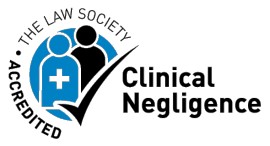Poor interpretation of CTG can result in stillbirth and brain injury

Contact
Table of Contents
Poor interpretation of a Cardiotocograph, more commonly known as a CTG, is a leading cause of stillbirth and brain injuries suffered by babies.
I thought it would be helpful to discuss the essentials of CTG monitoring as it comes up so often in our cases and I would not expect the average maternity patient, particularly a first-time parent, to understand what this is and how it works.
When is CTG used, what does it look like, and how does it work?
CTG is an electronic device used during pregnancy and labour to check the fetal heart rate and maternal contractions. There is a wide range of methods to monitor fetal and maternal well-being, but CTG is the most used technique in hospitals, particularly during the later stages of pregnancy and throughout labour.
The clinician should discuss the use of CTG with the mother and why they are using it. The mother is entitled to decline this technology.
The device consists of two transducers which look like stick-on discs and these are fixed to the abdomen of the pregnant woman with a belt. The belt will be attached to the machine which will display on a screen the data taken by the transducers. The machine will usually sit at the bedside of the mother and the fetal heartbeat will be audible. The reason why there are two transducers is that one is used to record the fetal heart rate with ultrasound technology and the other can read the maternal contractions. Both are important barometers for the health of the baby and mother. There are other important measurements to be regularly assessed by a clinician as well during pregnancy and labour, such as maternal temperature, blood loss, and the severity of the pain during contractions which cannot be analysed by a CTG.
When the CTG shows a non-reassuring or abnormal pattern, this is a trigger for the obstetricians and midwives to assess the health of the baby and mother more closely. When the CTG has two or more features of concern or any abnormal features, it is classified as abnormal.
It is useful for reliable screening of a fetus in a normal condition as well, as if there is sufficient evidence to conclude that the recording was normal, this may mean that further monitoring is unnecessary.
The observations picked up by the CTG are shown on a screen with a paper print-out which when used over a period shows patterns in the fetal heart rate which when normal will reassure the clinicians that the baby is breathing normally. When the heart rate is abnormal, this can indicate a fetus which is struggling and at the most serious end of the spectrum, can reveal hypoxia (which is where the baby is deprived of oxygen). Hypoxia or distress is often a consequence of when the fetus doesn’t receive enough oxygen, either due to problems with the placenta or difficulties with cord compression, for example when the umbilical cord becomes wrapped around the fetal neck. A pregnant woman contracting too frequently can also trigger fetal distress.
NICE Guidelines on interpretation of CTGs and when does the heart rate become abnormal?
The three categories of fetal heart rate, which can be detected by the CTG, and as defined under NICE Guidelines, are:
- normal/reassuring – at 110-160 beats per minute, which is an indicator that the fetus is in a good condition.
- Non-reassuring – when the heart rate becomes moderately higher or lower than the healthy range; and;
- Abnormal – where the fetal heart rate drops below 100 or is above 180
There are two further features of the heart rate which need to be observed to assess abnormality. These are known as:
- “variability” – which can be a positive feature but there can also be concerning fluctuations in the fetal baseline heart rate, particularly when variability is low; and
- decelerations – a drop in baseline heart rate is normal but if it takes too long to rise again then this can be a concern.
Defining abnormal variability and decelerations cannot be easily summarised so the above is merely a very brief and basic summary. The interpretations of both are complex even for experts.
The above features are also classified as normal/reassuring, then non-reassuring, and then abnormal. A normal CTG has all three features as reassuring but the CTG readings become abnormal when two or more non-reassuring or abnormal features are identified.
Investigations following abnormal CTG
When the CTG is abnormal, further investigations should be undertaken to decide whether delivery of the baby should be brought forward dependent on the diagnosis of the fetal and maternal condition. Sometimes these investigations will prove reassuring to the clinicians but the window for making the judgment call on delivery can be very short, as in cases where the fetus is in distress. Every minute between identifying an abnormality, decision-making and delivery can make a difference to whether the baby survives and the condition in which they are born.
One of the most worrying patterns is known as “acute bradycardia”, where the CTG notes a drop in heart rate for over three minutes. In these situations, an obstetrician should be summonsed urgently and often rapid preparations are made for delivery, particularly if the bradycardia lasts for 9 minutes or more.
Limitations of CTG
CTG came into use in the 1960s. Before this technology was introduced, there was little that clinical staff could tell about the health of the fetus. Having the benefit of such advanced technology was seen as a positive with the hope that there would be better outcomes for babies. It was hoped that incidences of cerebral palsy would be reduced.
The evidence, however, has shown that CTG had only a minor benefit in avoiding the rate of cerebral palsy and stillbirth. That is partly due to the problem that CTG reading is not straightforward and requires training and experience and also human factors mean that in busy wards, or with an under-trained doctor or midwife, they are prone to either fail to observe the CTG carefully or interpret it incorrectly. A common problem is where the CTG picks up in error the heartrate of the mother and not the baby. Also, the transducer can lose signal due to the probe being inadequately placed. The CTG which shows a rarer abnormal pattern can also be missed by less experienced staff. These are all examples of where clinicians may be falsely reassured that the fetus is in good health. This means CTG has a relatively high false-positive rate.
Dawes-Redman Criteria
To improve the accuracy of CTG monitoring, a Computerised CTG known as cCTG has been introduced for pregnancies over 28 weeks. This software was developed in the 1970s and 1980s by the University of Oxford Professors Geoffrey Dawes and Chris Redman, who fed in data from 8,000 electronic CTGs (now increased to a database of 100,000 CTGs) to invent software which would recognise diagnostic features of CTG readings before labour. It was seen as a transformational advance in fetal monitoring and became known as the Dawes-Redman criteria for which pregnancies of over 26 weeks gestation are eligible. Unlike the conventional approach, which relied upon assessment of the CTG patterns by sight and which could be very subjective and so prone to human error (and therefore poor outcomes), Dawes-Redman was seen as a powerful tool to increase CTG efficiency and overcome shortfalls in training. It is also quicker than a conventional CTG and reduces the scope for human error.
The cCTG system was recommended most recently in March 2019 in a document called Saving Babies Lives Part 2 but it is not mandatory and is not always suitable for all pregnant patients. For example, the NICE Guidelines do not recommend its use for uncomplicated pregnancies and it is also not suitable to use once labour is underway.
The cCTG will assess whether the CTG patterns are abnormal depending on whether it meets criteria set by the cCTG’s artificial intelligence, most commonly the Dawes-Redman criteria. A tick will show once the Dawes-Redman criteria is met. Where it does not meet the criteria after 60 minutes, the cCTG should be discontinued and the reason for not meeting the criteria will appear on the print-out A tier 2 doctor/consultant obstetrician will then need to make an assessment.
It is most commonly used for mothers who are not yet in labour and are concerned by reduced fetal movement.
However, Dawes-Redman is not always accurate for rare patterns and clinicians are obliged to carry out all the routine observations in addition to verifying whether the cCTG’s assessment is an accurate one. It should not be used in isolation of other monitoring techniques and there needs to be effective systems and training in place to ensure the cCTG can be relied upon.
For example, I act in a case where the fetus was suffering from severe anaemia which produces a rare but important pattern on the cCTG. This is an extremely dangerous condition for the fetus and is an easy pattern to detect by eye, but when observed by a non-expert, this can be missed. In my client’s case, the cCTG initially accurately found the criteria were not met, but when performed a second time incorrectly found that it had been met. This inaccurate result was not spotted by the obstetrician and my client was wrongfully discharged and reassured. Tragically, the baby was born with severe cerebral palsy. It follows that cCTG performs well even for rare abnormalities but is not immune from error.
Misinterpretation of CTG and common issues compromising maternity care
Trusts must ensure that all qualified staff who care for women in labour are competent to interpret CTGs and to escalate when there are concerns. They must also be sufficiently expert not to become so reliant on cCTG that they fail to exercise judgment independently or cannot use a standard CTG. cCTG is not always available and may not always be correct. The Dawes-Redman criteria cannot be used once the mother is in the first stage of labour. While the existence of this technology as a further technique to save babies’ lives means that outcomes will be much improved compared to 50 years ago, when there are compromised staffing levels, poor training and inadequate communication between staff in maternity wards, CTGs will continue to be misinterpreted. Tragically, occasionally mothers and babies will therefore be denied the full benefit they could have otherwise received by having access to these important advances in electronic monitoring.
If you have been affected by failures in the interpretation of your CTG, please contact Jodi Newton, who is a Senior Associate Solicitor in our Clinical Negligence team. Jodi specialises in birth injuries and cerebral palsy cases and is a leading practitioner in this area.
Share this article
Contact Jodi today
Call us 0207 485 8811
Email us Send us an email and we’ll get back to you
"Jodi Newton is a tenacious and intelligent fee earner. She fights tooth and nail for her clients and gains their trust and respect from the outset."
A stand-out solicitor with a huge track record of successful clinical negligence work. She is forensic in her attention to detail, but also sees the broad sweep of strategic considerations”.
Related Insights VIEW ALL
- 23.2.2022
Women from ethnic minorities experience worse maternity care
It has been reported today that the government has set up a new task force to look into why there...
Read more - 18.1.2022
Basildon hospital maternity unit still needs improvements
A Channel 4 News investigation into the maternity scandal at Basildon Hospital, which is part of the Mid & South Essex...
Read more - 13.10.2020
Parental Bereavement Leave & Pay
What is Parental Bereavement Leave and Pay? Parental Bereavement Leave and Pay is something that many parents will not be...
Read more - 20.10.2014
Doppler scan could prevent half of stillbirths
Doppler scans could prevent as many as 2000 stillbirths per year The press has reported that as many as half of...
Read more











